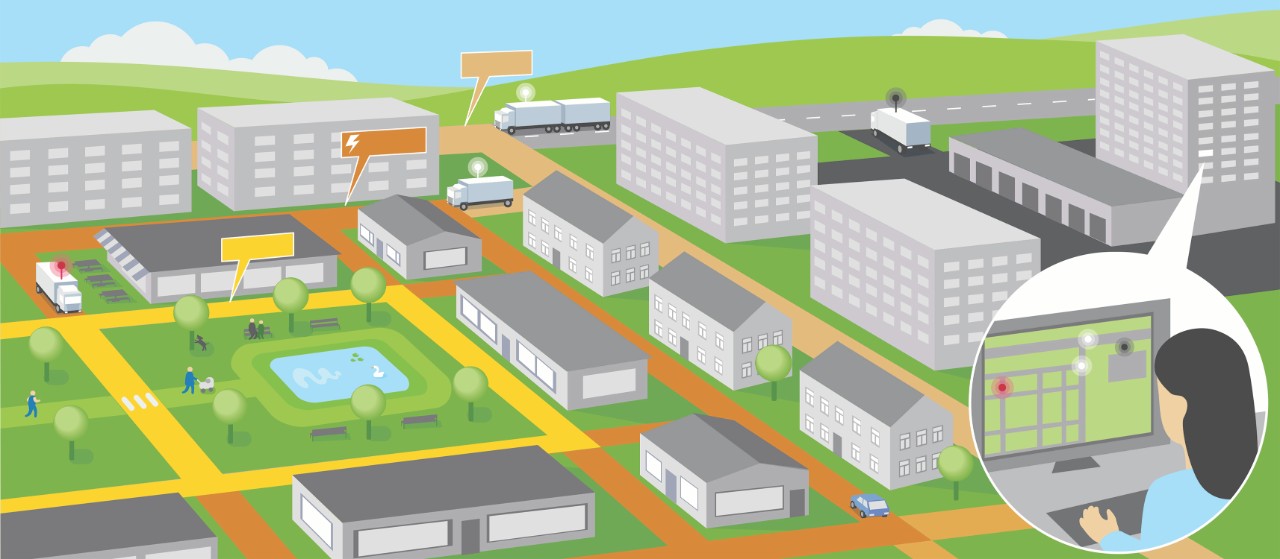
Scania participates in Swedish geofencing project
27 OCTOBER 2017
A safer, greener and more efficient transport system: controlling vehicles using geofencing has very exciting potential for the transport industry. Now Scania is taking part in a Swedish project to speed up development and implementation of the technology.
Geofencing is not a new invention but as the transport industry continues to develop, it is technology with much to offer. It works by providing a virtual border for a real-world geographical area, and for the transport it has the potential to be used in many different ways. Examples include reducing a vehicle’s speed or even stopping it altogether within a defined area, limiting a vehicle’s access to specified roads, zones or terminals, or programming a hybrid truck to switch over to silent electric mode when entering a city centre.
Part of Scania fleet management
The technology is already partly in use today as part of fleet management systems, for example by sending alerts to transport companies when a distribution vehicle leaves a defined area such as a terminal, or when the vehicle approaches its final destination.
“Thanks to the rapid development in vehicle connectivity many applications are already possible,” says Mathias Larsson Carlander, Business Concept Manager for Connected Services and Solutions within Scania. “Now all of us as stakeholders in the transport industry need to concentrate on building a common digital infrastructure – that means vehicle manufacturers, legislators, local municipalities and national transport administrations. We see it as part of the journey towards a smart and connected transport system.”
Road and driver safety aspects
Another use of remote technology could be to shut down a vehicle that is behaving in a suspicious way, such as during a robbery, or if should someone hijack a truck with the intent to harm people. However, Larsson Carlander points out that it’s also extremely important to consider road and driver safety aspects when creating future legislation and infrastructure.
“The infrastructure has to be set up in a way that takes road safety into consideration, for example letting the vehicle slow down and stop in a controlled way. It is also extremely important not to increase the risks for the driver, making him or her the target of a criminal.”
More efficient flows in cities
Geofencing, combined with intelligent speed-limiting technology, could also lead to more smooth and efficient flows in inner city traffic, says Larsson Carlander.
“Tests with intelligent speed-limiting technology on 47 London buses have shown promising results when it comes to bringing down the number of accidents and improving the traffic flow,” he explains.
Common view of the connected society
Scania is now taking part in a joint initiative in Sweden, where governmental bodies, vehicle manufacturers, municipalities and the national transport administration have come together to create a common infrastructure to increase and develop the use of geofencing.
“We need more joint efforts of this kind,” says Larsson Carlander. “It could start at a national level and continue to a European and global level. The important thing is that we get a common view of the connected society, of which logistics is such an important part.”
Geofencing
- When a connected truck leaves a defined geofenced area such as a terminal, the on-board computer sends an alert to the operator’s dispatching office.
- When the vehicle enters a city, geofencing technology could be used for intelligent speed-limiting.
- In inner-city areas, a hybrid truck could be programmed to switch from conventional powertrain with combustion engine to electrical powertrain.
- Pedestrian areas in cities could be geofenced to limit the speed of the vehicle to between 10 – 15 km/hour. An alert also goes to the operator’s dispatching office when the truck enters the defined zone.
- With the fleet management system, the transport company gets instant access to its trucks’ positions and movements.